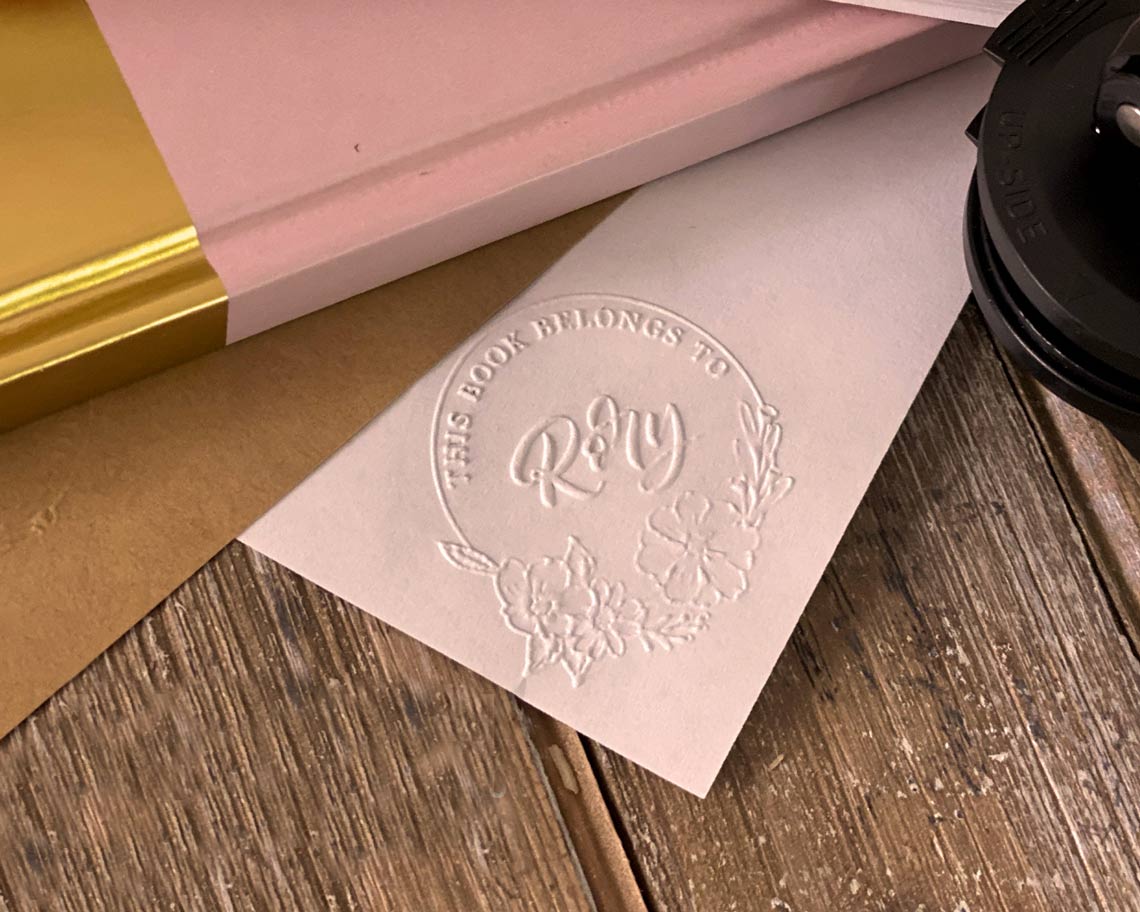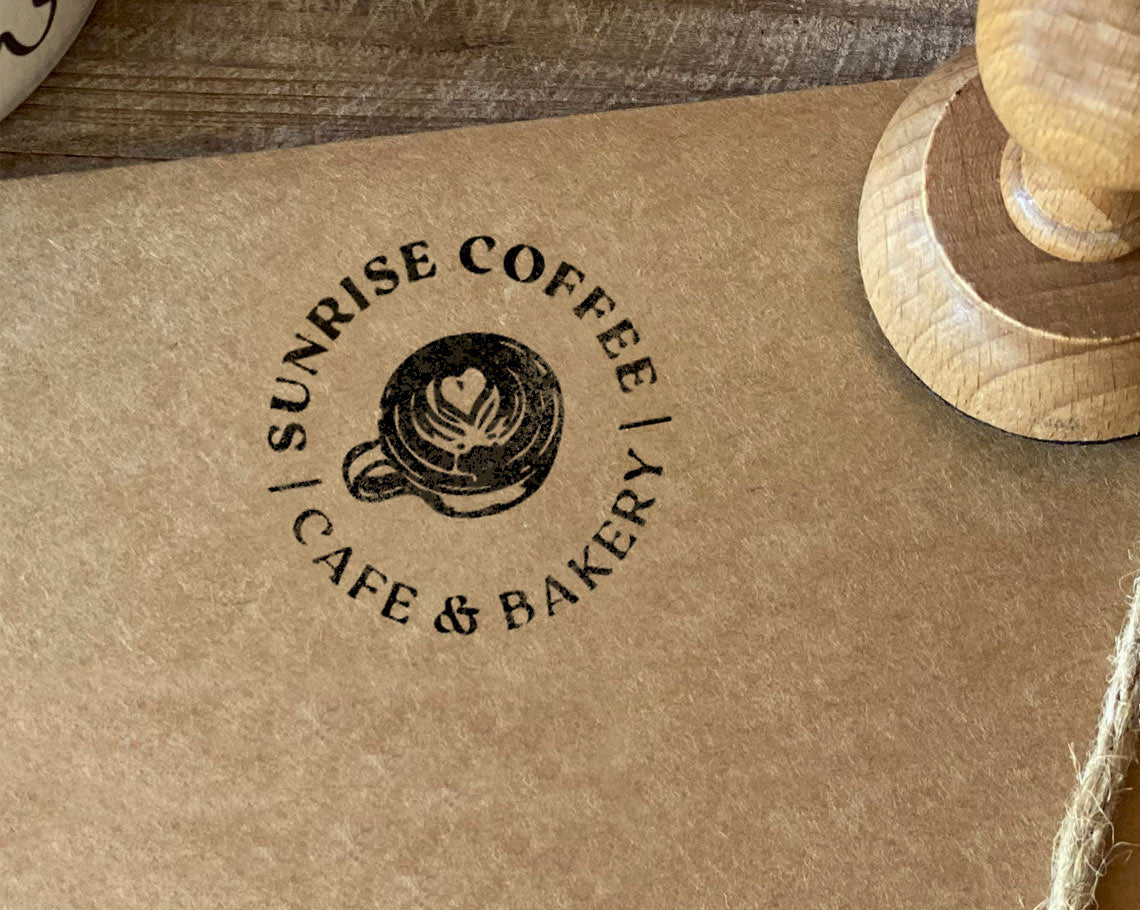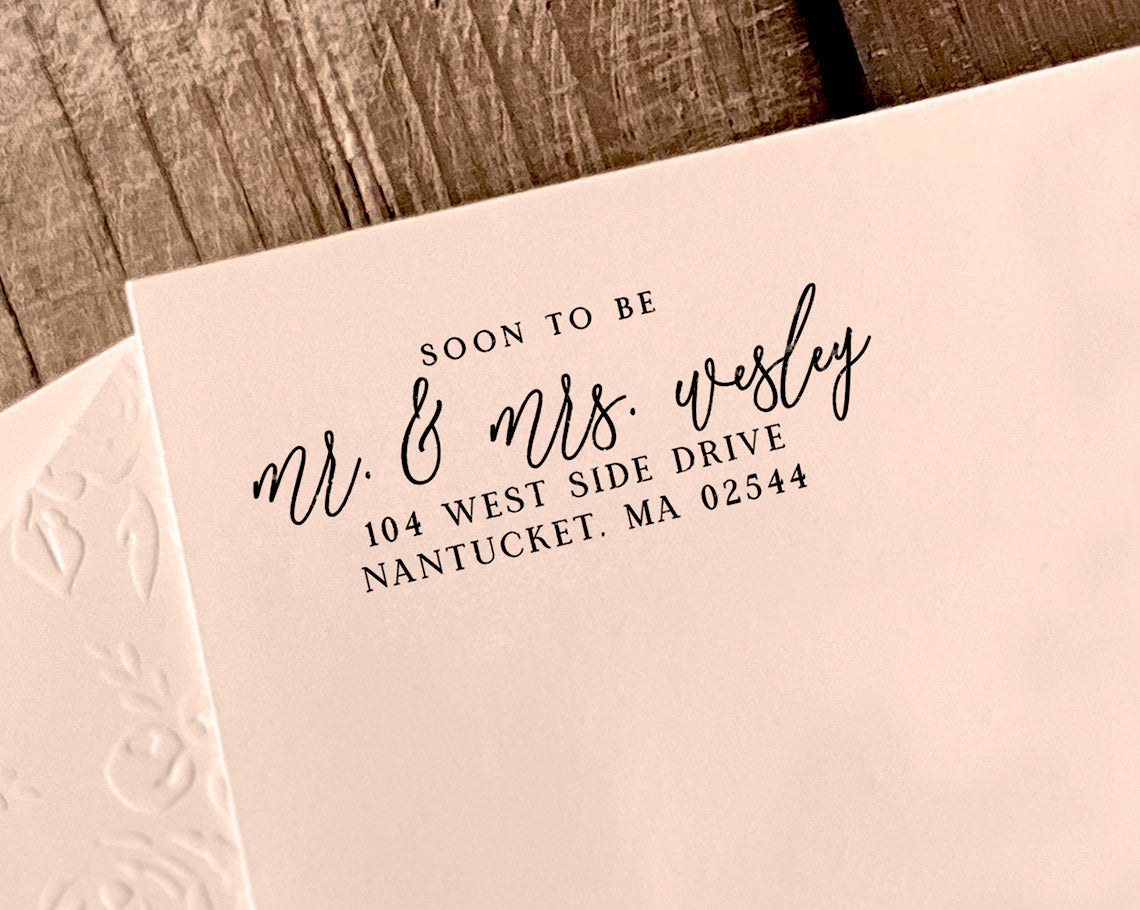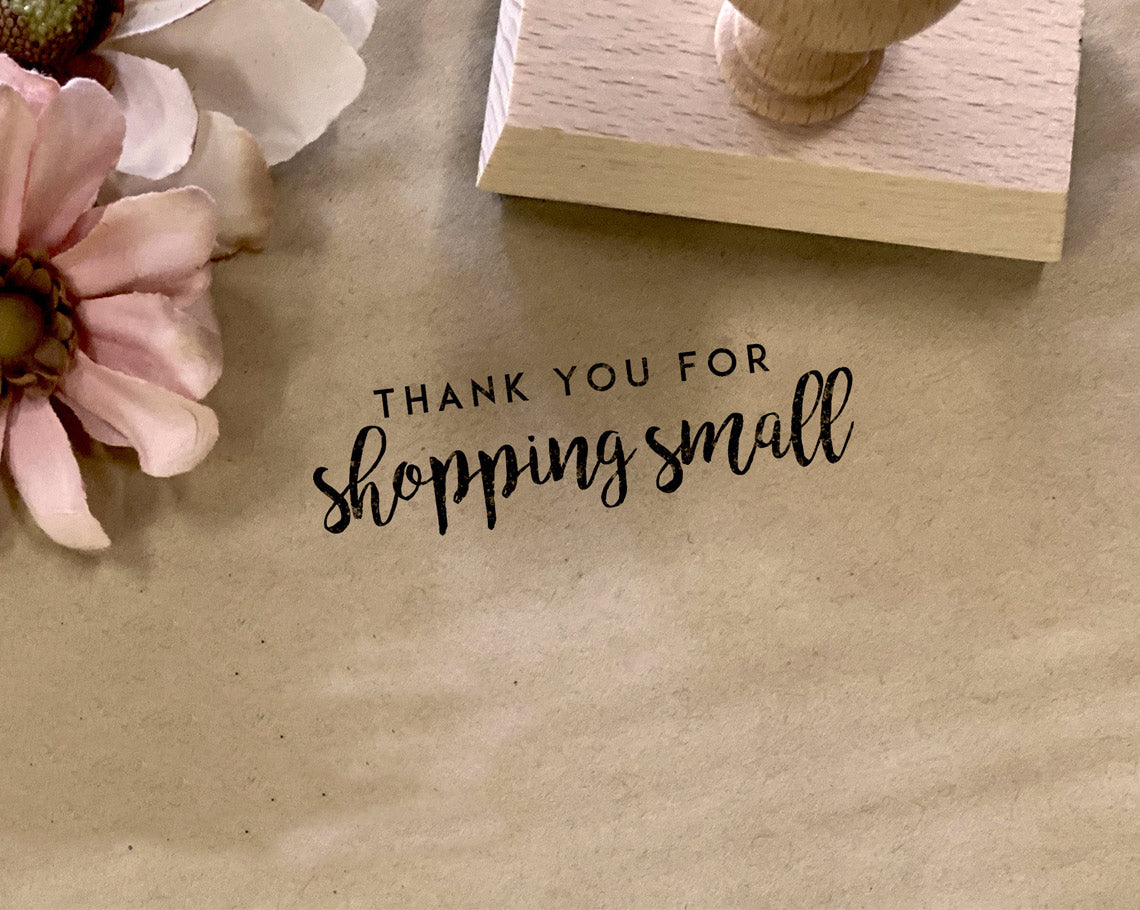When you're deciding on the details for your wedding, corporate event, or brand's product packaging, choosing between embossing and stamping goes beyond just looks. This choice shapes how your message comes across and influences how people interact with it.
Embossing and stamping are both great for adding unique designs to everything from invitations to packaging. But they're different in how they work, what they're best used for, and the kind of visual impact they create.
Differences between Embossing and Stamping: A Detailed Overview
Let's compare embossing and stamping to discover what truly separates the two apart. We'll examine the nuts and bolts of their processes and techniques, shedding light on how each technique offers a distinct advantage in both personal and professional settings.
From selecting the ideal materials for each method to understanding the durability and visual impact of their outcomes, we're here to help you choose the right choice that meets your specific needs.

An embosser imprints raised designs onto paper, adding artistic texture and dimension to documents in a unique, attention-grabbing way.
How Embossing Works:
Process & Technique
Embossing: Crafting Elevated Effect
Embossing takes materials like paper or leather and transforms them into three-dimensional designs, enhancing both the visual appeal and the feel of the surface. It's particularly effective for drawing attention to specific elements of a design, adding sophistication that appeals to both sight and touch.
Imagine using a custom 'This Book Belongs To' embosser. The embosser doesn't just apply a pattern; it adds depth and texture to the paper, creating an eye-catching 3-D effect.
- Material Selection: The material you choose for embossing affects the final look and feel of your project. Paper is a flexible and popular choice, great for a variety of designs. Leather adds a touch of luxury and is perfect for items that need to last. Thin metal sheets are less common but offer a unique and durable finish for special projects.
- Design Preparation: The design sets the tone for the embossed effect. Whether opting for simplicity or complexity, the design shapes the final appearance. Stamped with Love offers personalized embossers that make achieving refined results accessible, especially for anyone new to embossing.
- Setting Up the Embossing Dies: The heart of embossing lies in the dies – one featuring a raised design (embossing die) and the other with a recessed version of the same pattern (counter-die). Align these dies on either side of your chosen material.
- Applying Pressure: The technique of applying pressure needs a balanced approach. Think of applying pressure in embossing like brewing a perfect cup of espresso – it’s all about balance. Just enough pressure ensures that your design is imprinted with crisp clarity, much like the right amount of pressure extracts the best flavor from coffee beans. But just as too much pressure can make the coffee bitter, too much force in embossing can overwhelm the material. It's this delicate balance that turns a simple press into an art form, making the difference between a good embossed design and a great one.
- Revealing the Magic: Once the material is pressed, carefully remove it to reveal the embossed design. You'll notice that the areas where the counter-die pressed in are now raised on your material, creating a delightful tactile and visual effect.
Stamping: Effortless Elegance, Endless Possibilities
Stamping is refreshingly simple yet versatile, ideal for applying a wide range of surfaces with designs that can range from company logos to wedding invitation return addresses. Whether your designs are modest and understated or richly detailed, stamping makes adding your personal touch to various surfaces a breeze.
Logo stamps offer businesses an affordable, consistent way to quickly imprint their logo on documents, promotional materials, and packaging.
How Stamping Works:
- Choose the ink type: Different inks suit different materials. Choosing the right ink is like selecting the right seasoning for a meal – it should enhance, not overpower. For detailed work, photopolymer stamps capture fine lines like a skilled artist's tool.
- Choose Your Surface: Just like a painter selects a canvas, choose your material wisely – paper, fabric, wood, ceramic, or plastics. Find a surface that complements the ink for lasting impressions.
- Prepare the Stamp: Apply ink to your stamp by pressing it onto an ink pad until the design area is fully covered.
- Stamping Technique: Position and press the stamp with a firm, yet gentle touch. Applying consistent pressure is crucial for a clear image.
- Lift and Reveal: Carefully lift the stamp off the surface. The design should be cleanly imprinted.
- Repeat as Needed: For multiple images, repeat the process. Consistent pressure ensures uniform results. Consider using self-inking stamps for large quantities, as they automatically reapply ink.
Applications: Personal Use
Embossing
Embossing has become a favorite among crafters, celebrated for its ability to bring a unique, tactile dimension to various creations.
- Book collection: Emboss your personal book collection to imprint your own signature style, leaving a lasting mark of ownership that makes your collection truly one-of-a-kind.
- Scrapbooking: Embossing brings a physical depth to scrapbook pages, turning each memory into something more vivid and touchable.
- Card Making: Embossing transforms ordinary cards into exquisite pieces. It's ideal for adding refined, raised designs that give a luxurious feel, perfect for occasions like birthdays or weddings.
Stamping

Custom wedding stamps imprint names, monograms, or designs in colored ink onto wedding invitations, elegantly and efficiently adding a personal touch that makes each invitation unique for all your guests.
Stamping stands out for its versatility and ease of use in DIY projects, offering a world of creative possibilities.
- Customizing Fabrics: Stamps make personalizing fabric materials a breeze. You can add your stamp of creativity to T-shirts, cushions, or curtains, making your mark with fun and flair.
- Paper Crafts: Stamping is a fantastic tool for paper-based crafts. It allows you to add a splash of color and a dash of individuality to greeting cards or scrapbooks.
- Stationery and Invitations: When it comes to stationery, especially for special events, stamps offer both elegance and practicality. They provide a unified look for wedding invitations and RSVPs, adding a personal touch that resonates with the event's theme.
Applications: Commercial Use
Embossing for Business
Embossing in business serves as a subtle enhancement tool, directly impacting how products and documents are perceived.
- Product Packaging: Embossing on packaging serves a practical role in marketing by adding texture and visual appeal. This technique increases the perceived value of the product by giving it a premium look, essential for engaging customers in competitive retail settings.
- Legal and Official Documents: For legal and official documents, embossing is more than decorative. It provides a layer of authenticity and professionalism. The embossed seal not only signifies legitimacy but also establishes trust and authority, essential in formal transactions and official documentation.
- Business Branding: Business cards and documents with embossed details leave a lasting impression by adding a physical dimension. It's a subtle way to increase brand recognition, especially in industries where a premium look and feel are important.
Stamping for Business

Show customers your gratitude when they choose your small business with a customized "Thank You For Shopping" package stamp.
Stamping blends practicality and branding, offering a unique way for businesses to make their impressions.
- Product Labeling and Packaging: Stamping quickly brands packages and products with essential information. It's cost-effective and boosts visibility, ideal for small businesses aiming to stand out in the market.
- Marketing Materials: Efficiency and the ability to create a variety of eye-catching promotional materials makes stamping a practical and effective choice for businesses focused on crafting impactful marketing collateral.
- Fashion Industry Applications: Designers use custom stamps to apply distinctive patterns and logos on fabrics, labels and custom packaging. This technique not only brands the products but also adds a unique style element.
Materials They Can Be Imprinted On
Both embossing and stamping have unique ways of enhancing materials, despite their different techniques. Let’s see how each method distinctively transforms different materials, bringing a special touch to your choice of medium.
Embossing
-
Paper and Cardstock: Embossing adds a touch of elegance to paper and cardstock, creating a luxurious, textured appearance. This makes it perfect for books pages, stationery, greeting cards, and scrapbooking projects, where the tactile feel of raised designs adds a special quality.
-
Thin Metal Sheets: When applied to thin metal sheets, such as aluminum or copper, embossing produces durable and intricate designs. This method is popular for custom metal art, jewelry, and decorative items, combining longevity with visual appeal.
-
Soft Leather: Embossed leather transforms into an exquisite canvas, standing out with a blend of sophistication and originality. It’s commonly used to personalize items like wallets, belts, journals, and book covers.
Stamping

Self-inking fabric stamps are a creative way to easily add prints and patterns to fabrics and textiles without the mess and hassle of traditional stamp pads.
Order Self Inking Clothing Stamps
- Paper: Stamping on paper is incredibly versatile, suitable for creating everything from bold graphics to delicate patterns. This makes it ideal for a range of uses, from artistic prints to return addresses and grading stamps for teachers.
- Fabric: Stamping on fabric opens up a world of possibilities for personalizing clothing, accessories, and home décor. The inks used for fabric are durable and wash-resistant, ensuring longevity of the designs.
- Wood: Stamping on wood adds a personalized touch to items like furniture, ornaments, and DIY crafts. The inks and paints used for wood are absorbed into the grain, creating enduring designs.
- Ceramics: Ceramics can be beautifully enhanced with stamping. This technique is particularly popular for creating unique tile designs and handmade pottery. When stamped on ceramics before kiln firing, the designs become permanent.
- Metals and Plastics: Specialized stamps can also be effective on certain metals and plastics, especially for industrial labeling, branding, and custom designs on retail products.
Durability of Embossed and Stamped Designs
Embossed and stamped designs have a lifespan that varies widely, influenced by the materials and usage conditions. Embossing typically offers more longevity, especially on hard materials like metal and leather. Stamped designs' durability depends greatly on the ink's quality and the surface it's applied to.
Embossing Durability
- On Metal and Leather: Embossing on metal and leather offers high durability. These materials allow designs to withstand frequent wear and tear, making them suitable for items like wallets and metal tags.
- On Paper: Embossed designs on paper have the potential to last for decades. This durability depends on using quality paper and storing it properly, shielded from moisture and sunlight.
Stamping Durability
- Ink and Material Factors: The longevity of a stamped design hinges greatly on how well the ink matches the surface. When you use durable inks on compatible surfaces, they stand up better to environmental elements, ensuring the designs stay crisp and colorful.
- Variability in Longevity: Some stamped designs may gradually fade or show wear over time. This is especially true for designs on surfaces that are frequently used or exposed to elements like light and moisture, and it also depends on the ink and material used.
Final Impressions: When to Emboss and When to Stamp
Stamping is ideal for when you need quick, colorful, and versatile results. It's a game-changer in business settings for branding and creating eye-catching promotional materials. Additionally, stamping can also bring a refined finish to different materials, ideal for both commercial and artistic purposes.
For projects that require a textured sophistication and durable visual impact, embossing is your answer. This method is tailor-made for projects where luxury and professionalism are key, such as in high-end packaging or formal documents. The raised, tactile designs of embossing bring an unparalleled level of sophistication.
Ultimately, the choice between stamping and embossing boils down to your project's needs: stamping's straightforward versatility or embossing's textured and durable impression. Your choice can greatly influence your project, guaranteeing a memorable impact.







